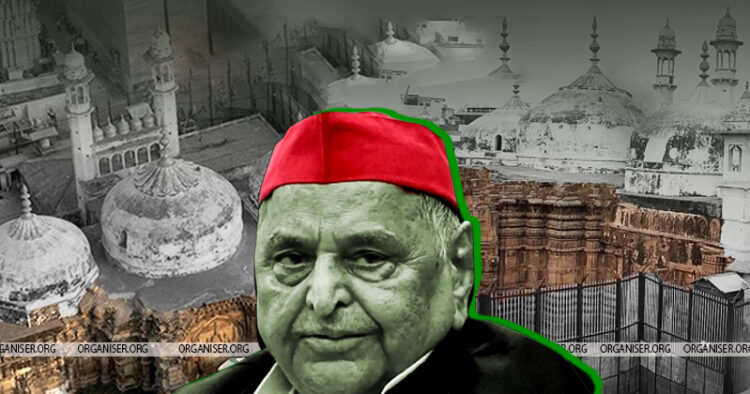It was in 1993, that the then Chief Minister of Uttar Pradesh and Samajwadi Party leader Mulayam Singh Yadav stopped the puja at the Gyanvapi complex. The move came soon after the disputed structure in Ayodhya was demolished on December 6, 1992. After being voted to power, he decided to halt the puja.
Before 1993, puja was performed at the Maa Shringar Gauri Sthal within the Kashi Vishwanath-Gyanvapi complex every day.
In the year 2003, five women came forward and filed a petition seeking permission to perform puja at the Maa Shringar Gauri Sthal within the Kashi Vishwanath-Gyanvapi complex.
Senior Advocate Hari Shankar Jain, representing the five women in the High Court and also representing the Hindu side in the Gyanvapi case, said to the Organiser that the Mulayam Singh Yadav-led Samajwadi Party (SP) Government took action in 1993 by placing iron fences around the site and halting the puja activities. He had ordered to stop the puja of Vyasji, Ganeshji, and Hanumanji.
Jain slammed Mulayam Singh Yadav for taking such a decision despite being a Hindu.
Advocate Jain said, “With today’s decision, the right has been given to perform puja at ‘Vyasji Ka Tehkhana’ and the court has given the order to the District Officer for compliance of the order within a week.”
In a recent development, the Archaeological Survey of India (ASI) unveiled startling revelations from its exhaustive 850-page survey report. The report, released on January 25 after submission to the district court in Varanasi on January 21, sheds light on the historical complexities surrounding the existing structure at the Gyanvapi site.
The ASI’s comprehensive survey, encompassing scientific studies, architectural remains, artefacts, inscriptions, and sculptures, presents compelling evidence suggesting the pre-existence of a Hindu temple predating the current structure. The report, available with Organiser, highlights the presence of hundreds of artefacts, broken statues, and murtis, reinforcing the assertion of a pre-existing Hindu temple.
According to the report, an inscription found in the lower room of the south corridor within the structure commemorates the construction of a mosque during the 20th regnal year of Mughal Emperor Aurangzeb, corresponding to A.H. 1087 (1676–77 CE). A meticulous comparison between this inscription and a copy made by ASI in 1965–66 uncovered deliberate attempts to erase the final two lines, which mentioned the construction and expansion.



















Comments